
an unsolicited review of the whitney biennial by Gloria Z. '26
(not really a review just stuff I liked)
Last weekend, I took a short solo trip up to New York to see the Whitney Biennial! I’ve wanted to go to the Whitney Museum of American Art for years, ever since I learned that they’re host to (almost) all of the paintings Edward Hopper made in his lifetime. So, when I learned that the biennial was opening this year on March 20, just a few days before the start of our break, I impulse-bought bus tickets to Penn Station. And so down to New York I went.
But first, what exactly is the biennial? From Wikipedia:
The Whitney Biennial is a biennial exhibition of contemporary American art, typically by young and lesser known artists, on display at the Whitney Museum of American Art in New York City, United States. The event began as an annual exhibition in 1932; the first biennial was in 1973. The Whitney show is generally regarded as one of the leading shows in the art world, often setting or leading trends in contemporary art. It helped bring artists like Georgia O’Keeffe, Jackson Pollock, and Jeff Koons to prominence.
Basically it’s a big show that the Whitney puts on every two years, with a different overarching theme each time. It’s known for 1) focusing on American art, 2) showcasing less established artists, and 3) being overseen by primarily in-house curators (as opposed to inviting external ones). The Whitney has also been putting more focus on accessibility in recent years, in that they’re trying to break down the pretentiousness and elitism that so often clouds the fine art world.
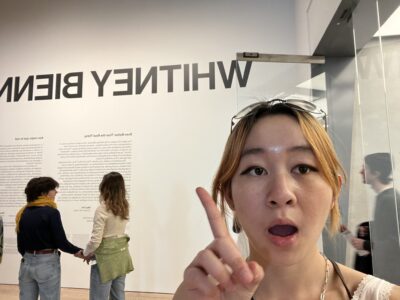
yippee
The 2024 theme is “Even Better than the Real Thing,” alluding to questions of authenticity, identity, gender, nature, and AI. I personally feel like the theme didn’t have a particularly strong presence in the selection of works, but that’s really not a complaint. The show featured 71 artists and collectives, with many of them working in video, installation, and sculpture. It took me about four hours to get through all of the works on display, which spanned floors 1-6 of the museum. Here are some of my personal favorites, in no particular order!
PS sorry in advance for the terrible quality of the photos I took. all quotes are snipped from the museum description cards <3
The Past Awaiting the Future/Arrival of Drummers by Maja Ruznic
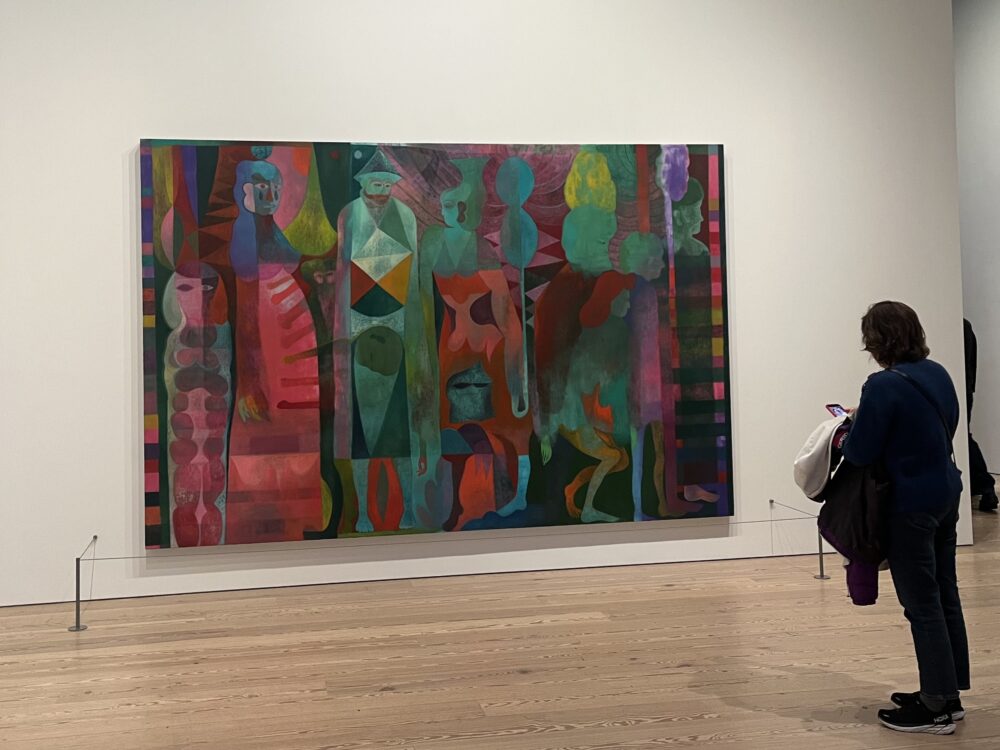
“[This painting] looks at how multiple things can be true at the same time: birth, violence, pain, suffering, joy and music… The movements suggested by the figures’ feet… collapse these temporalities into a single symbolic image.”
Contrapposto by Jes Fan
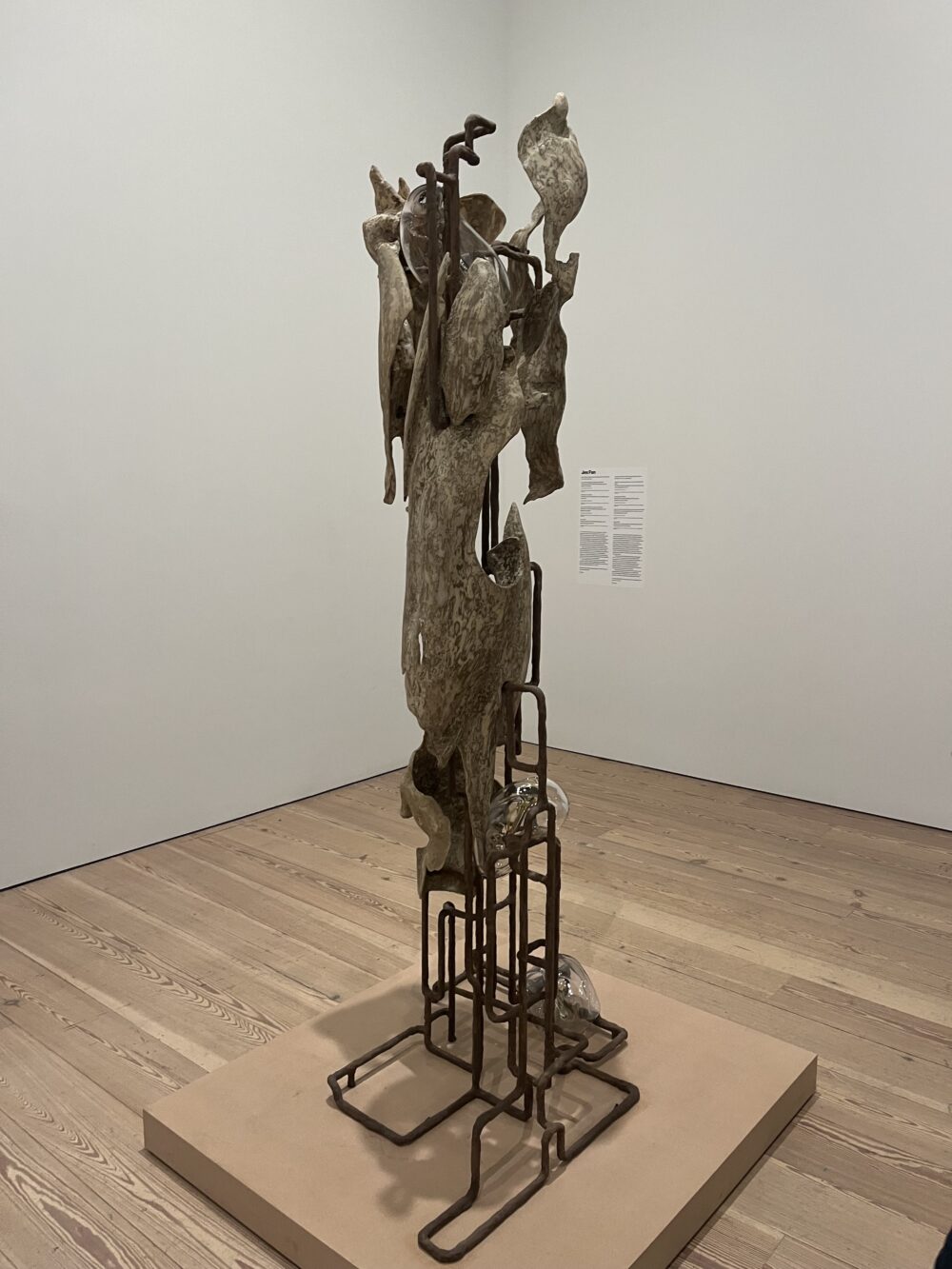
“…created from 3-D printed CAT scans of his own body… Contrapposto is composed of one of his vertebrae, copied six times and draped over a metal structure, turning the skeleton inside-out to become the skin. Glass forms hand-blown by the artist and his team resemble body organs inside.”
deepest ocean, what we do not know, we might see? by Suzanne Jackson
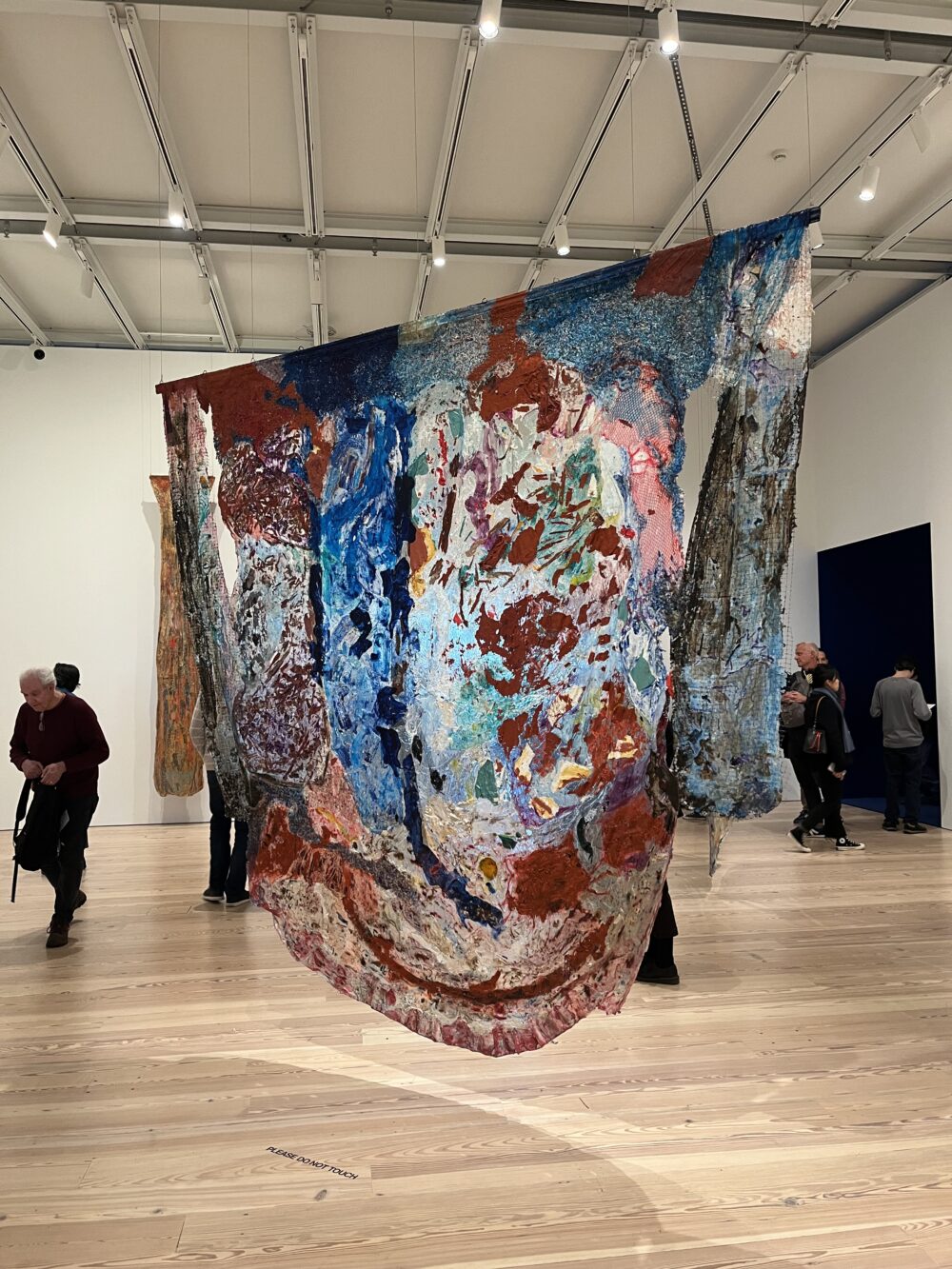
“[Jackson] made these suspended paintings without canvas, slowly building up many layers of acrylic, detritus, gel medium, and objects from the natural world, including seeds from her garden… the paint becomes an armature for itself.”
TRAY TRAY KO by Seba Calfuqueo
(video piece; the still image below is from the Whitney website)
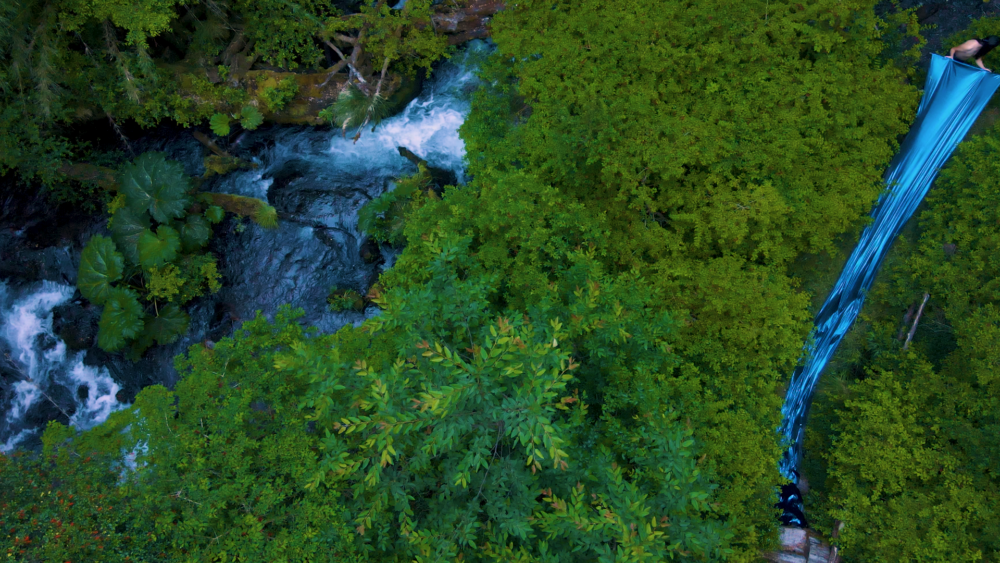
“Draped in an electric blue fabric, the artist acts as a conduit between the tangible and the spiritual… This meditation on fluidity, literal and symbolic, also works against other perceived binaries, including that of gender.”
Proxy by Takaka Yamaguchi
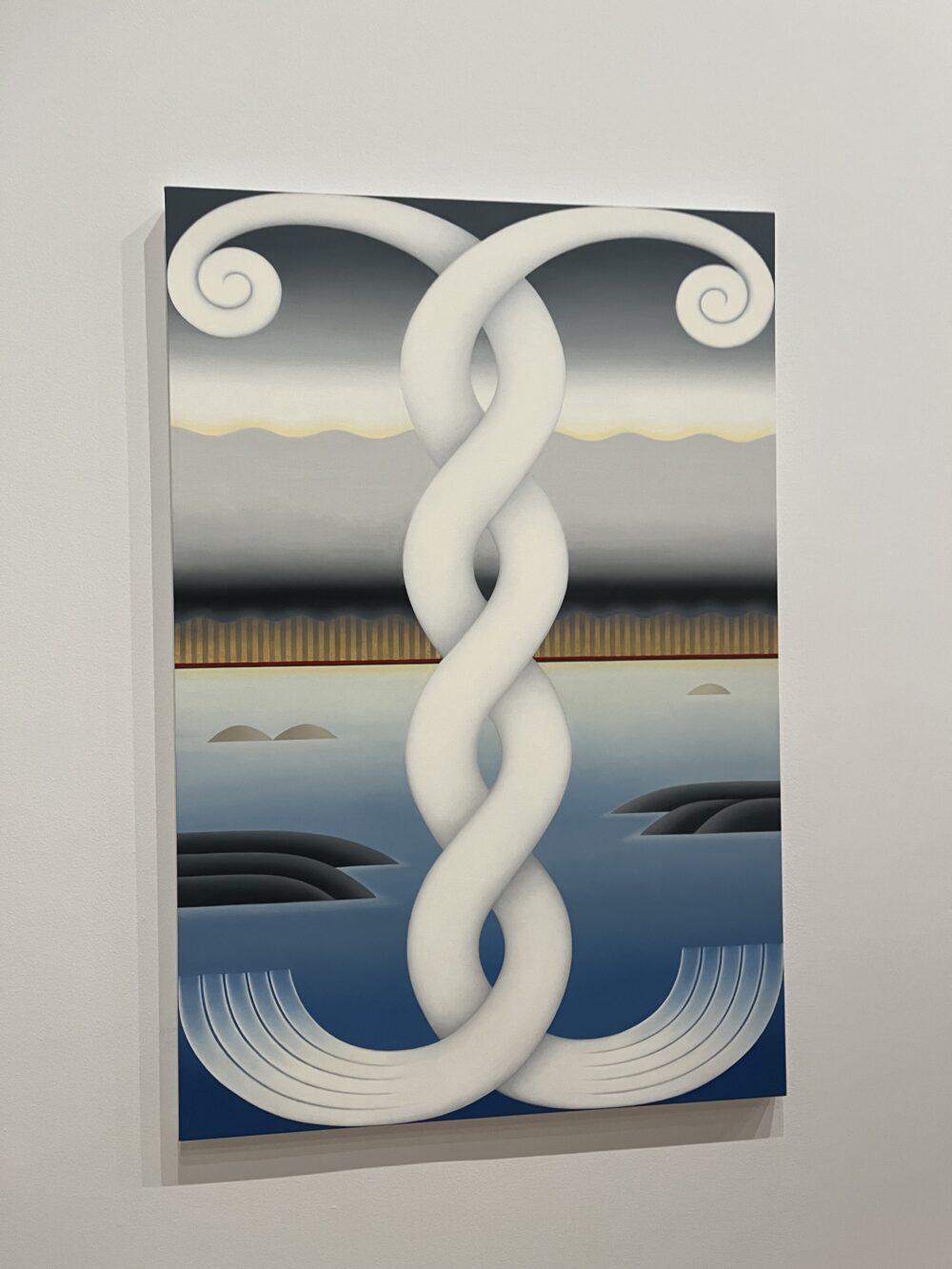
“[Her seascapes] reflect Yamaguchi’s experimentation with what she calls ‘abstraction in reverse,’ or taking recognizable forms, like clouds or waves, and abstracting them to the point of pattern… The luminous surfaces are intentionally decorative and structured using graphic techniques drawn from Mexican muralism and Japanese print design alike.”
Lacunae by Mary Kelly
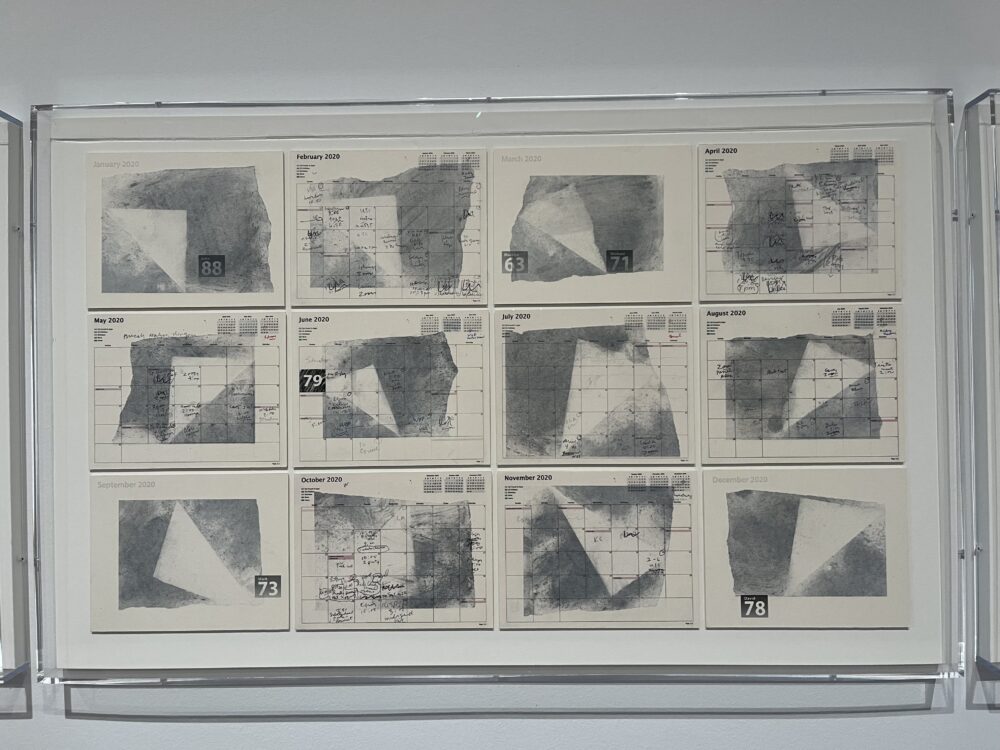
“Kelly starts with the calendar… and uses it as a framework for exploring what may be the most profound disruptions to our sense of it: the seemingly arbitrary fits and starts of aging and the passing of friends and loved ones… Together, the ash and the transparent vellum of the printed calendars invite the viewer to reflect on materiality as well as the body and its final passage of transformation.”
In Her Time (Iris’s Version) by Diane Severin Nguyen
(video piece; the still image below is from the Whitney website)
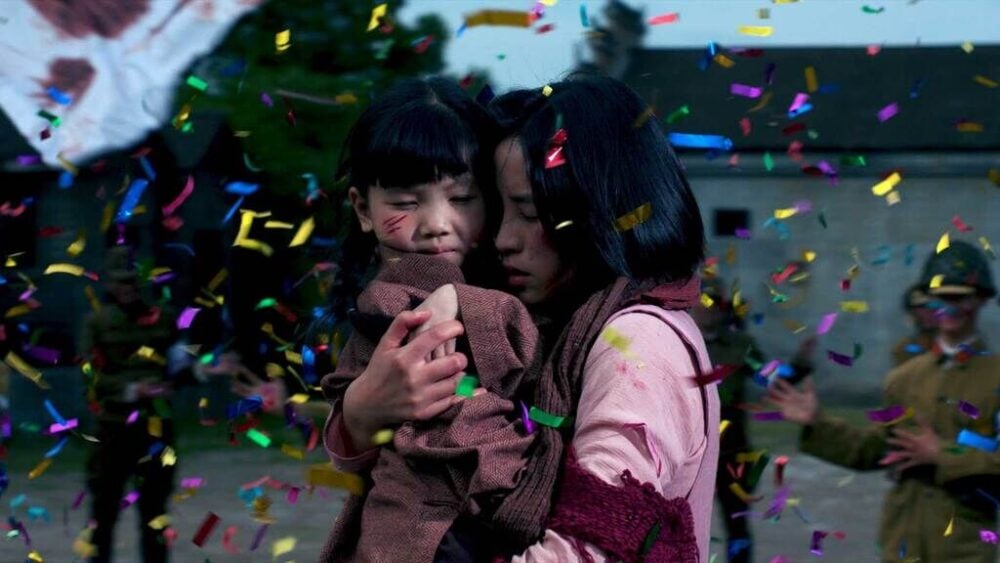
“Nguyen explores the ways that history circulates in the present–largely through popular media, partly as memory, and partly as re-creation or even fan fiction… fiction and reality fuse as she explores the limits of the ways history is told and uses re-enactment as a vehicle for visualizing the future.”
Afferent Nerves by P. Staff
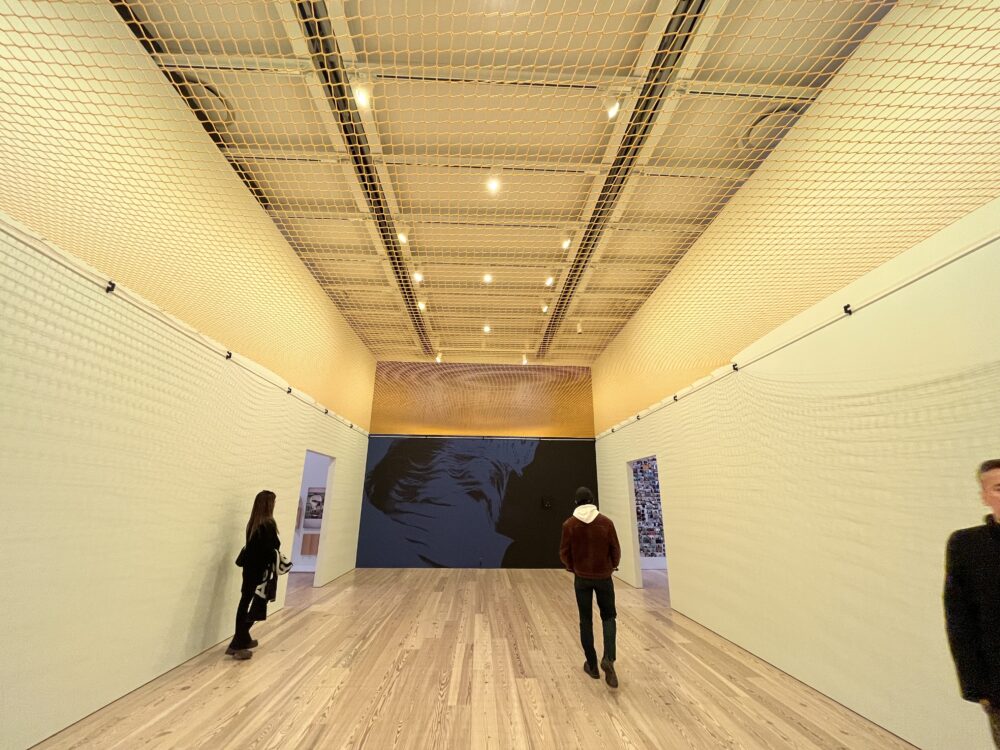
“…an idea that reimagines the gallery as a kind of body, permeated here by a sense of danger. Staff bathes the installation in an acidic yellow light. A live electrical net hangs above the gallery, out of reach but audibly buzzing… a particular trans mode of being that exists in the tension between dissociation and hypervigilance.”
Air I Breathe: Radio by Holland Andrews
(sound piece; listen to it on the Whitney website (scroll down))
“…located in the stairwell, [created] entirely from vocal sounds that at times have an ambient effect and at other times offer a range of harmony, dissonance, and melody… the work meditates on the sensation of receiving information on multiple channels, as if the mind were switching stations on a radio.”
Air I Breathe: Radio is close to an hour in length, but listeners will likely only hear it for a minute or two at a time as they move from floor to floor. I thought it was so cool that the experience of traveling through the show was also scored with audio like this, and the piece itself is so enthralling, especially as you descend or ascend around the speakers suspended in the spiral staircase.
Disclaimer that I am so far from knowledgeable about contemporary art, but I did really like the show for the most part. I felt like it captured the current climate of the USA quite well–both in a political/social sense and in a literal climate change sense. I particularly liked the work that spoke directly to a state of being–in stasis, or peril, or temporality–especially Staff’s installation and Fan’s sculptures. And I stood for an entire hour until the pads of my feet were aching, absorbed into Nguyen’s 67-minute length film.
I don’t really have a benchmark to base my thoughts off of, as I’ve never been to a biennial or wide-ranging curated show like this, but I was pretty surprised by how many video-based artists there were (as opposed to painters). There were also a couple large-scale pieces located on outdoor terraces, but I had checked my winter jacket, so I only stayed outside for a few seconds to take them in–enough for the bitter cold to sting my skin–before slipping back inside. Besides the physical works on show, there are also many more films/ live performances associated with the exhibition that I didn’t get to see. I believe some of them will be viewable online at some point, and there are pictures of most of the static work online as well. But I would definitely recommend visiting in person, as everything is better when you see it in real life. One might say–even better than the real thing :)